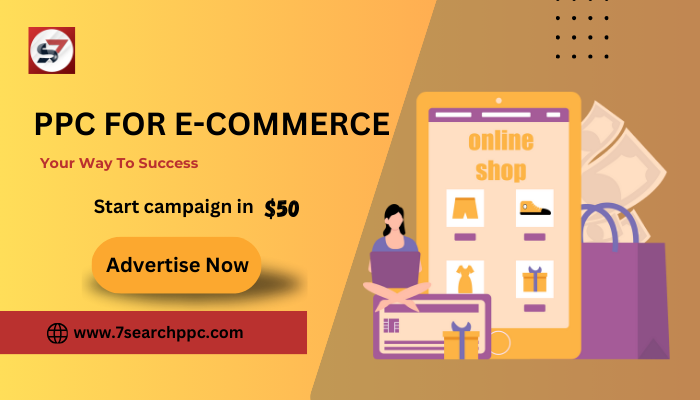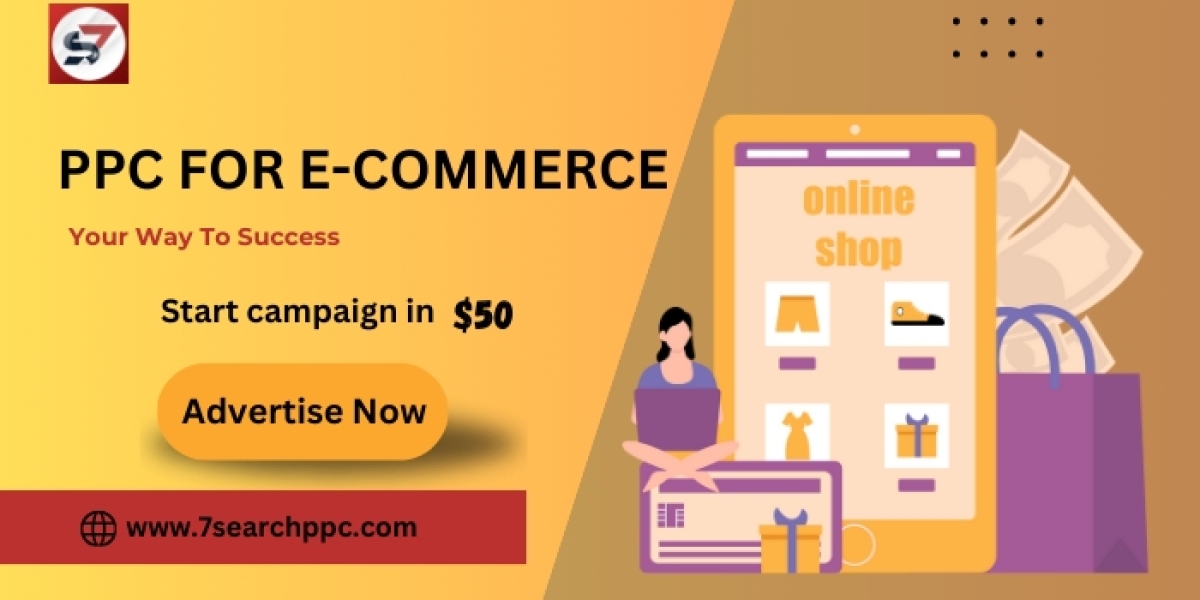In today's digital marketplace, where competition is fierce and attention spans are short, e-commerce businesses must leverage every tool at their disposal to stand out and drive sales. Pay-per-click (PPC) advertising is a powerful weapon in the arsenal of any e-commerce entrepreneur. With the right strategy and execution, PPC campaigns can deliver targeted traffic, increase conversions, and ultimately boost revenue. In this comprehensive guide, we'll explore the best practices for PPC for e-commerce, covering everything from choosing the right ad networks to optimizing campaigns for maximum ROI.

Understanding the Dynamics of PPC for E-Commerce
What is PPC for E-Commerce?
PPC advertising is a digital marketing model where advertisers pay a fee each time their ad is clicked. For e-commerce businesses, PPC presents an opportunity to showcase products directly to potential customers who are actively searching for them. Unlike traditional advertising methods, PPC allows for precise targeting, real-time tracking, and flexibility in budget allocation.
Why PPC is Essential for E-Commerce Success
In the competitive landscape of e-commerce, simply having a great product or service is not enough. You need to ensure that your target audience can find you amidst the noise of the internet. PPC offers several advantages for e-commerce ad networks:
Targeted Reach: With PPC, you can target specific demographics, interests, and behaviors, ensuring that the right audience sees your ads.
Immediate Results: Unlike search engine optimization (SEO), which can take months to see results, PPC campaigns can drive traffic and conversions almost instantly.
Measurable ROI: PPC platforms provide detailed analytics that allows you to track the performance of your campaigns in real-time, making it easy to measure ROI and optimize accordingly.
Flexibility: PPC allows you to adjust your campaigns on the fly, whether it's tweaking ad copy, targeting parameters, or budget allocation, giving you greater control over your marketing efforts.
Choosing the Right Ad Networks for E-Commerce
Google Ads
As the largest and most widely used PPC platform, Google Ads offers unparalleled reach and targeting options for e-commerce businesses. With Google Shopping Ads, you can showcase your products directly within search results, making it easy for shoppers to discover and purchase items. Additionally, Google's robust ad targeting capabilities allow you to reach potential customers at every stage of the buying journey.
Facebook Ads
With over 2.8 billion monthly active users, Facebook offers a massive audience for e-commerce businesses to tap into. Facebook Ads allow you to target users based on demographics, interests, and behaviors, making it ideal for reaching niche audiences. Moreover, Facebook's dynamic product ads enable you to retarget users who have previously visited your website or shown interest in your products, increasing the likelihood of conversion.
Amazon Advertising
For e-commerce businesses selling on Amazon, Amazon Advertising is a must-have tool for driving sales and visibility. With options like Sponsored Products, Sponsored Brands, and Sponsored Display Ads, you can promote your products directly within the Amazon marketplace, reaching millions of potential customers who are ready to buy.
Microsoft Advertising
Formerly known as Bing Ads, Microsoft Advertising offers a valuable alternative to Google Ads, particularly for e-commerce businesses looking to reach audiences beyond Google's ecosystem. With Microsoft Advertising, you can tap into the millions of users who use Bing as their preferred search engine, leveraging unique targeting options and lower competition compared to Google.
Crafting Compelling E-Commerce Ads
Optimizing Ad Copy
The key to a successful PPC campaign is crafting compelling ad copy that resonates with your target audience. When creating ad copy for e-commerce, consider the following best practices:
Highlight Benefits: Clearly communicate the unique selling points and benefits of your products to entice potential customers.
Include Keywords: Incorporate relevant keywords in your ad copy to improve visibility and relevance.
Call-to-Action (CTA): Use strong, actionable language to encourage users to take the desired action, whether it's making a purchase, signing up for a newsletter, or exploring your product catalog.
A/B Testing: Continuously test different ad variations to identify which messages resonate best with your audience and drive the highest conversions.
Leveraging Dynamic Product Ads
Dynamic Product Ads (DPAs) are a game-changer for e-commerce businesses, allowing you to automatically generate personalized ads based on user behavior and preferences. By dynamically showcasing products that users have previously viewed or added to their cart, DPAs increase relevance and drive higher conversion rates.
Optimizing PPC Campaigns for E-Commerce Success
Implementing Conversion Tracking
To accurately measure the success of your PPC campaigns, it's essential to implement conversion tracking. By tracking key metrics such as purchases, sign-ups, and page views, you can gain insights into which ads are driving the most valuable actions and adjust your strategy accordingly.
Embracing Retargeting
Retargeting is a powerful strategy for re-engaging users who have previously interacted with your website or products. By serving targeted ads to users who have abandoned their carts or browsed specific product pages, you can remind them of the value you offer and encourage them to complete their purchase.
Continuous Optimization
PPC is not a set-it-and-forget-it strategy; it requires ongoing optimization to ensure maximum efficiency and effectiveness. Regularly monitor your campaigns, analyze performance data, and make adjustments based on insights from A/B testing and conversion tracking.
Conclusion
Mastering PPC for e-commerce is a multifaceted endeavor that requires strategic planning, creative execution, and relentless optimization. By understanding the dynamics of PPC advertising, choosing the right ad networks, crafting compelling ads, and optimizing campaigns for success, e-commerce businesses can unlock new levels of growth and profitability in today's competitive landscape. So, embrace the power of PPC, and watch your e-commerce empire thrive.
FAQs (Frequently Asked Questions)
Q1.What exactly is PPC for e-commerce?
Ans. PPC (Pay-Per-Click) for e-commerce refers to a digital advertising model where businesses pay a fee each time their ad is clicked. It's a popular marketing strategy for online retailers to drive targeted traffic to their websites and promote their products directly to potential customers.
Q2. How does PPC for e-commerce differ from traditional advertising methods?
Ans. Unlike traditional advertising methods such as print or television ads, PPC for e-commerce offers precise targeting options, real-time tracking, and flexibility in budget allocation. With PPC, businesses can reach their target audience at the right time and place, leading to higher conversion rates and better ROI.
Q3. Which ad networks are best for e-commerce PPC campaigns?
Ans. Some of the best ad networks for e-commerce PPC campaigns include Google Ads, Facebook Ads, Amazon Advertising, and Microsoft Advertising. Each platform offers unique targeting options and audience reach, allowing businesses to tailor their campaigns to their specific goals and target audience.
Q4. What are dynamic product ads, and how can they benefit e-commerce businesses?
Ans. Dynamic product ads (DPAs) are a type of ad format that automatically generates personalized ads based on user behavior and preferences. For e-commerce businesses, DPAs are highly effective in showcasing products that users have previously viewed or shown interest in, leading to higher relevance and conversion rates.
Q5. How can I measure the success of my PPC campaigns for e-commerce?
Ans. Success in PPC for e-commerce can be measured through various key performance indicators (KPIs) such as click-through rate (CTR), conversion rate, return on ad spend (ROAS), and cost per acquisition (CPA). By tracking these metrics and analyzing campaign performance data, businesses can gain valuable insights into the effectiveness of their PPC efforts and make data-driven decisions to optimize future campaigns.









